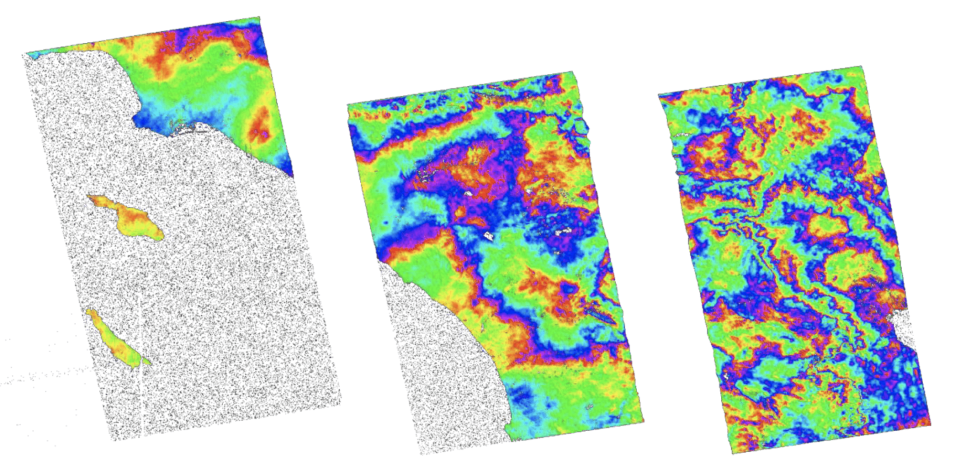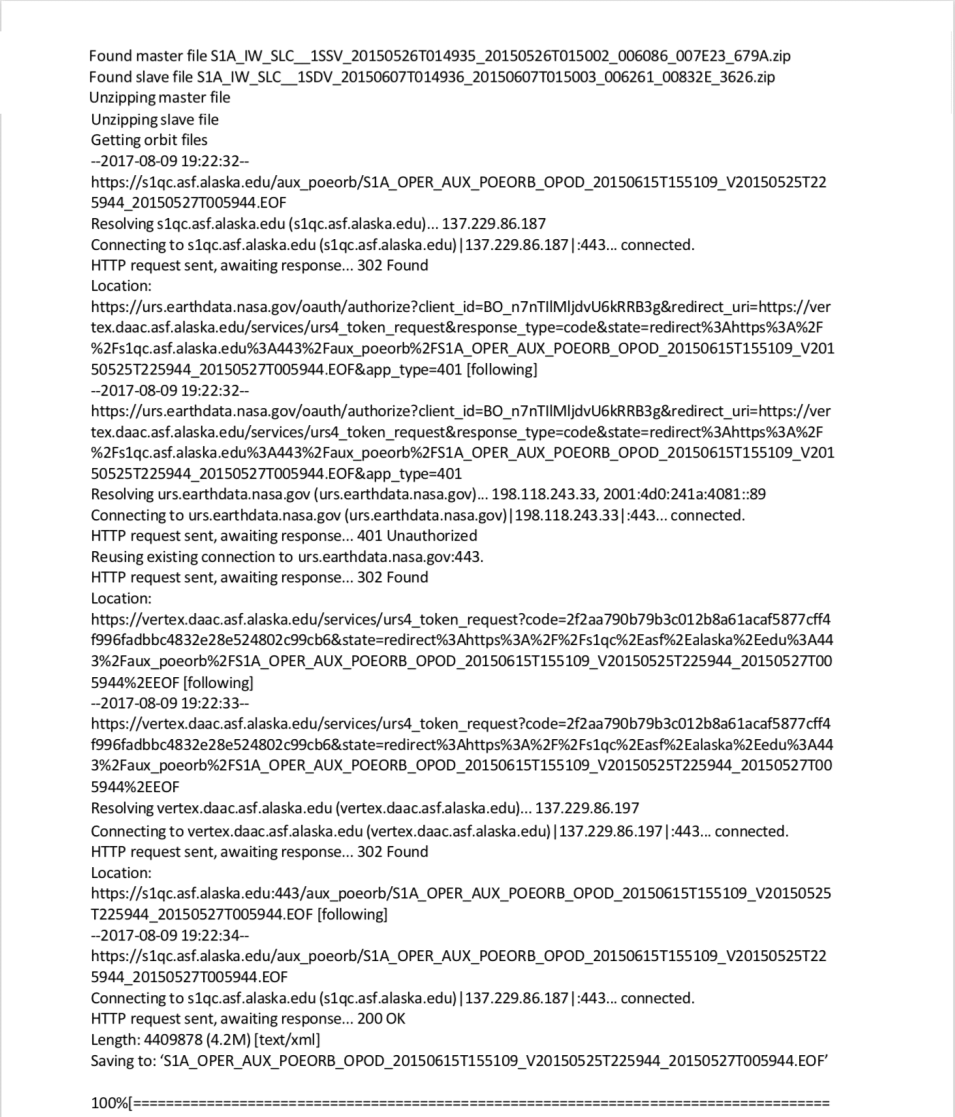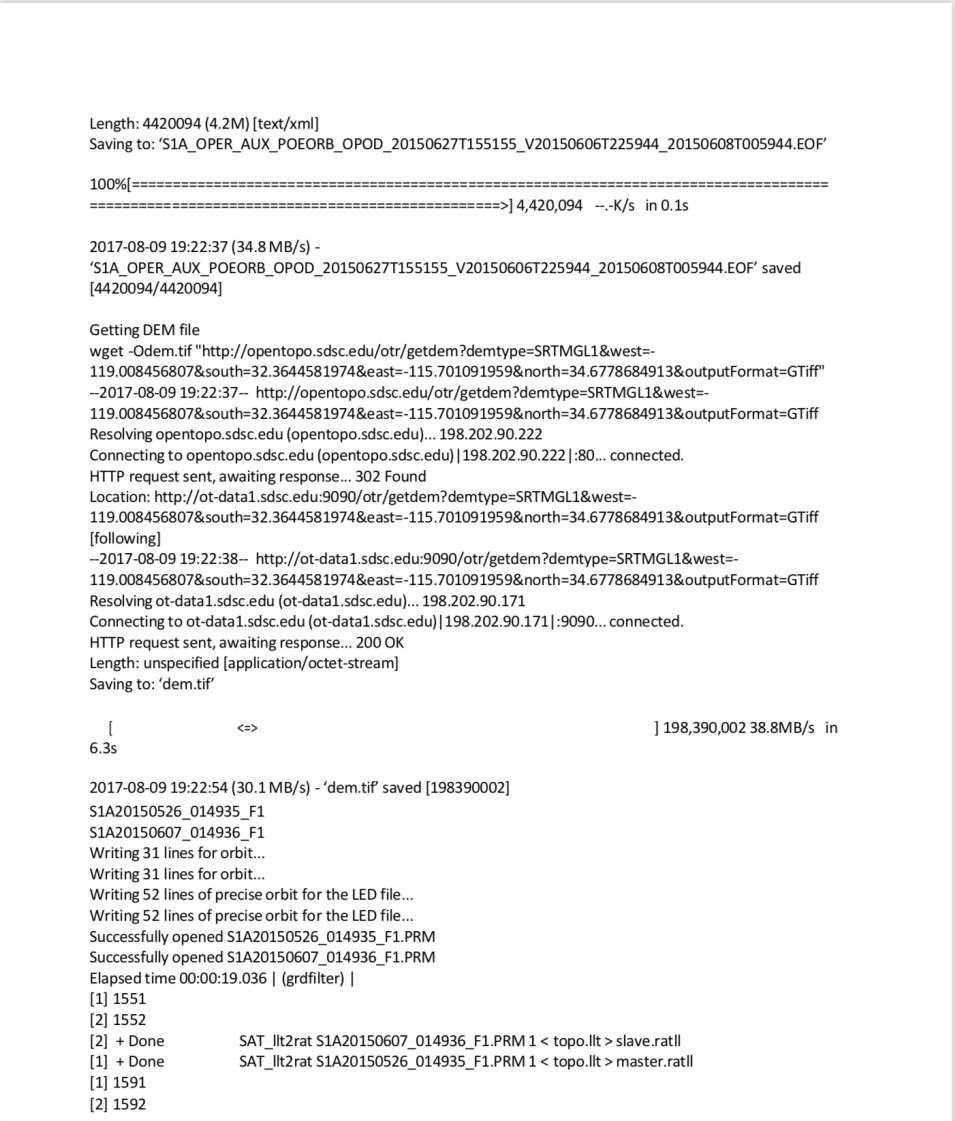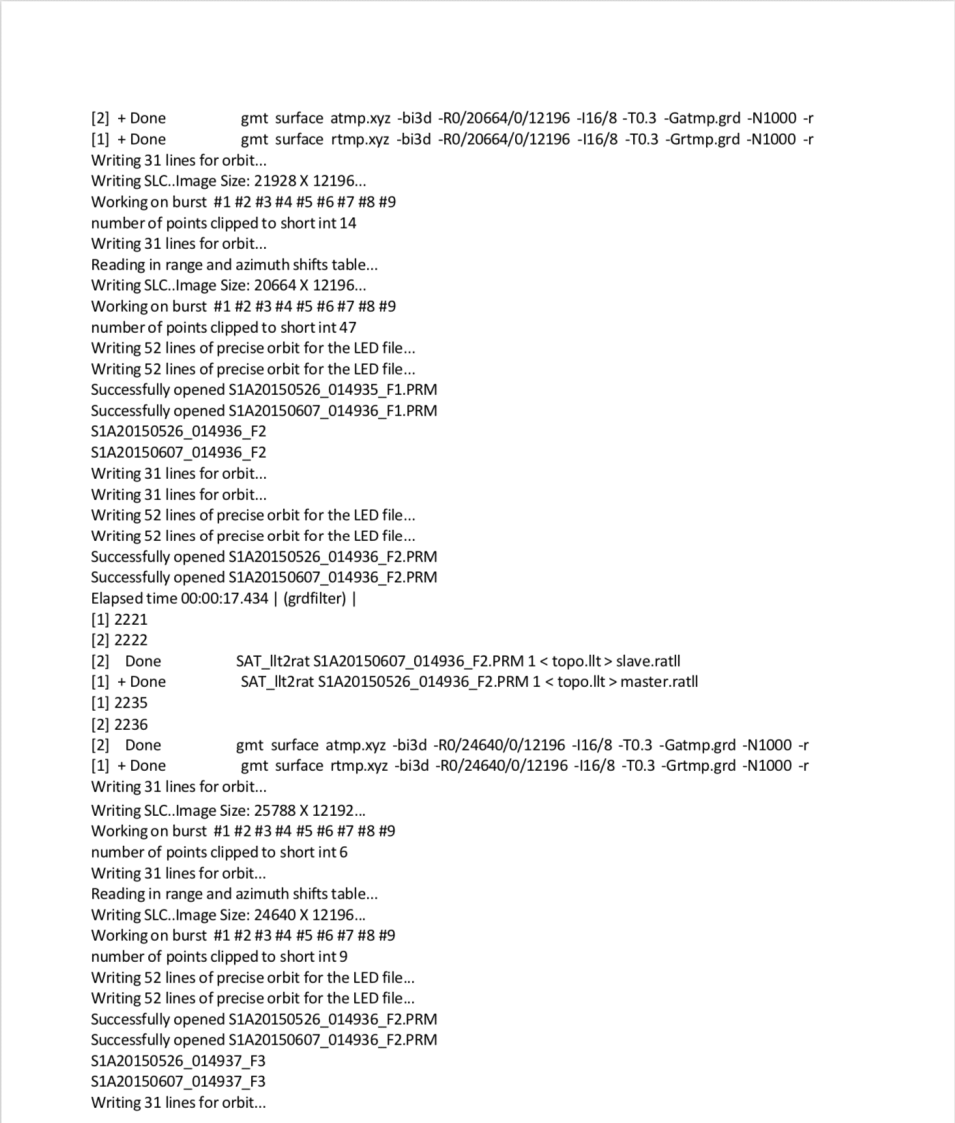Background
In order to perform differential interferometry on Sentinel-1 data using the GMT5SAR software package, ASF provides the python script procS1GMTSAR.py. This script takes two Sentinel-1 IW SLC files and creates a differential interferogram of the data in both GeoTIFF and KMZ format. The user may specify an input DEM file (which must be in GMT GRD format) or a DEM file will automatically be downloaded for the user via the opentopo service. The script creates an interferogram for the main polarization, VV, only.
The Sentinel-1 granules must be in the directory where the script is run, i.e. the .zip files must be in the directory where you run the script. In addition, the ASF provided GMT5SAR configuration file, config.s1a.txt, must be in the same location as your executable file procS1GMT5SAR.py.
Required Pre-Steps
The How to Create and Unwrap an Interferogram with GMT5SAR Script in the Cloud — OS X recipe is the third and final part of a tutorial spanning multiple recipes.
Part 1: How to Configure AWS for Running the GMT5SAR InSAR Recipe
Part 2: How to Connect to EC2 with SSH Mac OS X
Prerequisites
Materials List:
- AMI (AWS East, ASF-INSAR-GMT5SAR)
- ASF config file: config.s1a.txt (home/Ubuntu)
- Python 2.7 (2.7.12-1ubuntu0~16.04.1)
- .netrc file (home/Ubuntu)
- GDAL (gdal-bin (2.1.3+dfsg-1~xenial2))
- Sample Granules (Two Sentinel-1 SLCs, IW, VV only)
- S1A_IW_SLC 1SSV_20150526T014935_20150526T015002_006086_007E23_679A.zip
- S1A_IW_SLC 1SDV_20150607T014936_20150607T015003_006261_00832E_3626.zip
- Sample granules located at /home/Ubuntu/SLC
- ASF script: procS1GMT5SAR.py
AMI Software Version Numbers:
python2.7 (2.7.12-1ubuntu0~16.04.1)
python-lxml (3.5.0-1build1)
python-requests (2.9.1-3)
gdal-bin (2.1.3+dfsg-1~xenial2)
libgdal-dev (2.1.3+dfsg-1~xenial2)
python-gdal (2.1.3+dfsg-1~xenial2)
csh (20110502-2.1ubuntu1)
subversion (1.9.3-2ubuntu1.1)
autoconf (2.69-9)
ghostscript (9.18~dfsg~0-0ubuntu2.7)
libfftw3-dev:amd64 (3.3.4-2ubuntu1)
libgmt-dev (5.2.1+dfsg-4ubuntu2~xenial2)
gmt (5.2.1+dfsg-4ubuntu2~xenial2)
Steps
Configure the script — from your EC2 Window
- Phase unwrapping on/off.
- Default unwrapping off (interferogram only): threshold_snaphu=0.0
- For unwrapping on, edit the config file in a text editor, set threshold_snaphu=0.2
- Edit the .netrc file.
To get the precision state vectors from ASF, you must edit the provided .netrc file.
Add your URS/Earthdata username and password (same as Vertex login):
cd /home/Ubuntuvi .netrc
Add these lines:
machine urs.earthdata.nasa.govlogin <username>password <password>
You are ready to create an interferogram!
Run the Script — Create an Interferogram
- Issue the following command to run the GMT5SAR process:
python procS1GMT5SAR.py<master granule name><paired granule name>
Notes:
- Use two Sentinel-1 SLCs, VV polarization only
- The master (older) granule must be first
- Use .zip or .SAFE files
- Script options:
- -h, – -help shows help message and exits
- -d DEM, – -dem <yourDEMfilename> User-specified DEM file (in GMT format). If not used, the script will pull a DEM for you.
- Prior to running the script a second time, delete or move unnecessary files.
Example:
python procS1GMT5SAR.pyS1A_IW_SLC 1SSV_20150526T014935_20150526T015002_006086_007E23_679A.zipS1A_IW_SLC 1SDV_20150607T014936_20150607T015003_006261_00832E_3626.zip
The script will take about an hour. The three commands prefaced with “Running Interferogram:” takes the bulk of processing time. Expect to wait a significant amount of time for each of the calls to p2p_S1A_TOPS.csh to finish (as much as an hour per call).





